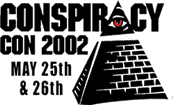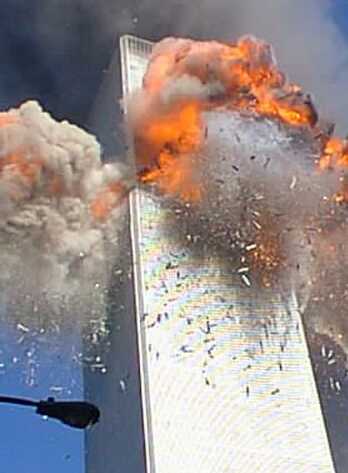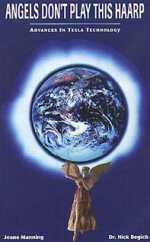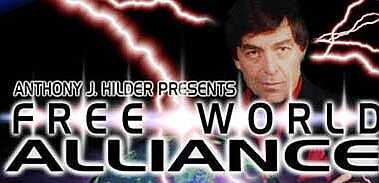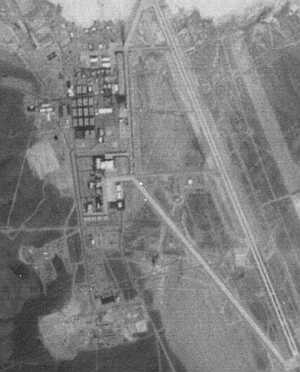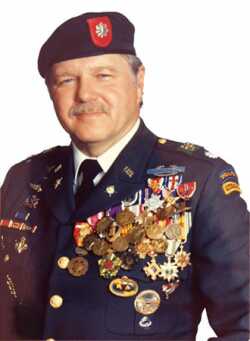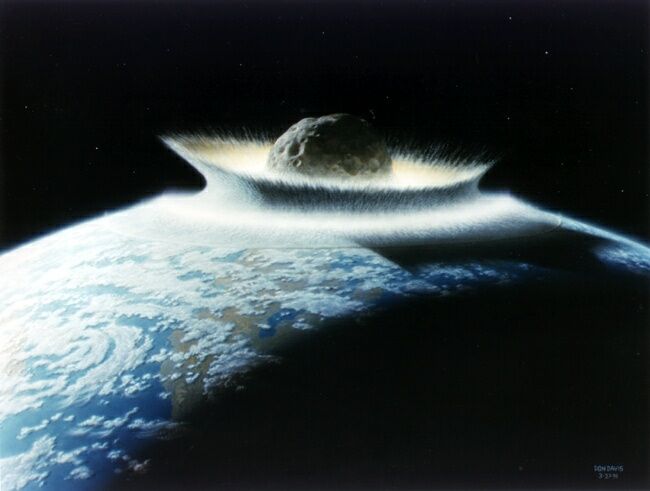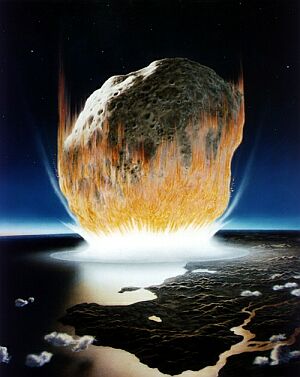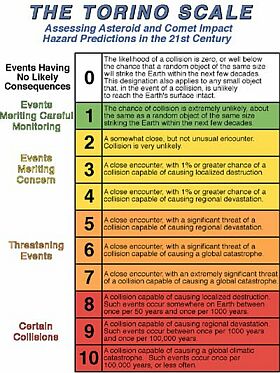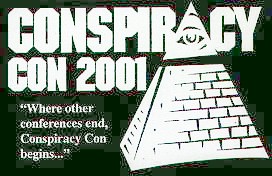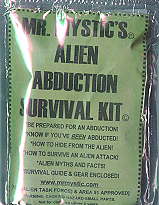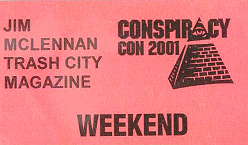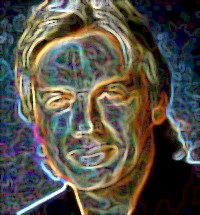Web of Conspiracy Con 2003
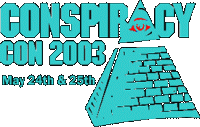
Santa Clara, CA
24th-25th May, 2003
Every year, it seems, more and more conspiratorial cracks appear in the landscape. This year, the war against Iraq, looking for those pesky – and apparently, non-existent – weapons of mass destruction, showed once again that politicians have absolutely no problem deceiving the electorate when they feel the need. Bringing this to the attention of the public is where events like Conspiracy Con come in, though the topics covered were far broader – and, being honest, covered the entire range of plausibility too.
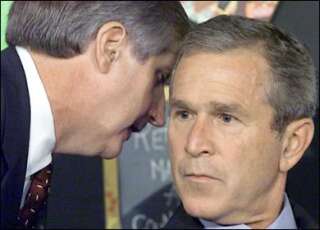
Despite the Gulf War, the most frequently-referenced topic was the events of 9/11. That our government should have known about it in advance seems certain, but the question now being probed is whether they did. There is certainly evidence, such as the remarkable delay in sending up interceptors, which suggests the possibility. And if you’ve seen photos of the moment when George Bush was supposedly told of the attacks, his reaction seems closer to “tell me something I don’t know already” than the shock and horror you might expect.
We preceded the event with a couple of days in San Francisco. If you go there, do yourselves a favour and leave your car at home. Driving is a nightmare, and parking is worse: our hotel charged us $25/day for the use of their garage. There is plenty of transport around the city, but they’re rather more vague about how you get into the centre. It was a relief to leave (albeit at a snail’s pace, onto the Bay Bridge) for the wide-open spaces of Santa Clara – even if we’d spend the majority of the next two days in the hotel, save the odd hunter/gatherer trip to the local curry house [And can I just say in passing that putting cloves into keema naans is an idea we hope does not catch on…]
Stan Monteith – There was something old-fashioned about the opening speaker, who traced the New World Order back to Cecil Rhodes, tying him to various occult-influenced secret societies. This kind of thing seems more than slightly antiquated these days, enhanced by Monteith’s fondness for quoting poetry (Tennyson’s Locksley Hall being a favourite). He did have some interesting points, in particular a plausible idea that Jewish involvement in the Bolshevik Revolution was a reaction to the Tsar’s anti-Semitism, as shown by his support for The Protocols of Zion. Monteith also suggested the recent extension of copyright law was partly an attempt to suppress information, but he was probably just worried about lawsuits, since his book seemed largely to be a collection of photocopies lifted from other publications. C-
Arizona Wilder – I took more notes during Arizona Wilder’s presentation than any other speaker. I was also less convinced of the veracity of what she said, than by any other speaker. This contradiction in terms really requires explanation at length, so here’s a separate article, all about Ms. Wilder. Here, we’ll just cut to the chase, and give the grade for a presentation whose only real value was as entertainment. D-
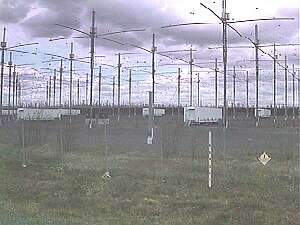
Jerry Smith – Smith replaced the hospitalised Vance Davis, and while a lack of preparation was obvious (Smith had only been called the day before), this was still a fascinating talk on HAARP, the High Altitude Active Auroral Project. Last year, Dr. Nick Begich covered the same topic to good effect, but Davis concentrated here on the potential uses, both benign and malign, of the technology, which include everything from mind control to deflecting ICBMs. He covered its origins in the work of Nicholas Tesla (and his obsession with pigeons!), and looked at whose agendas it might further. I’ve had his book, HAARP: Ultimate Weapon of the Conspiracy, sitting on the shelf since last year’s event: I think it’s now on the fast track to being read. Double plaudits for providing such an engrossing presentation at very short notice. B+
Jordan Maxwell – He spoke at 2001’s convention, and his theme this time was similar, probing into words to find their hidden meaning. Refreshingly, while many conspiracists see ominous iconography on a dollar bill, Maxwell finds it less disturbing, using historically sacred symbols worthy of respect. He looked into the origins of Christianity and its hijacking of earlier religions; for example, “Solomon” being a compound of Sol-Om-On, three words related to sun-worship. His weakness was a tendency to make a point, then pound it home by giving far too many examples; this got repetitive, but he also delivered the best quote of the convention. “Always trust the seeker of truth. Never trust the one who claims to have found it.” B-

There was another workshop, but you had to pay $40 to see Richard Hoagland, of “Face on Mars” fame – a feature now revealed (right) as no more than coincidental shadows. If I were in Hoagland’s shoes, I’d be more concerned about trying to regain some degree of credibility, and less about getting cash out of the public. We, needless to say, did not pony up to see him. Inevitably, this conference attracted some odd individuals, who had perhaps got out on day release. A couple of these showed up at the Q&A session, but others, unfortunately, chose to sit near us (attracted by Chris’s “psycho magnetism” – hey, she married me!). There was Ilsa, She-wolf of the Auditorium, to whom the slightest sound seemed to cause immeasurable pain. There was the Bag Lady, who demanded we clear off chair space…so she could put her possessions there. And there was the individual who, on hearing my British accent, demanded to know who’d killed Princess Diana. There was some disappointment at my response – know little, care less – and I wish I’d fabricated some (in)credible plot instead.
Jim Marrs – Is there anyone out there who really believes that Kennedy was killed by Lee Harvey Oswald, acting alone? If so, they should have been present for Jim Marrs’ informative and enjoyable ‘J.F.K. Assassination 1.0.1’ talk. Beginning with a slide showing a dubious character at Jack Ruby’s Carousel Club, a month before the shooting – who turned out to be the young Marrs! – he performed an efficient demolition job on the findings of the Warren Commission. This is, admittedly, like shooting fish in a barrel, but it’s always good to be reminded of the wild implausibilities in the “magic bullet theory”. Who arranged it, is harder to say. As Marrs pointed out, Kennedy had angered virtually every violent faction operating in America: Mafia, CIA, miltary-industrial complex. Perhaps, like Murder on the Orient Express, they all did it. Regardless, the effect was a coup d’etat that to this day remains unacknowledged. A
Carol Brouillet & Ken Jenkins – Although most speakers referred to the events of 9/11, this pair were the only ones to make it a focus. One can’t doubt their commitment as activists, but as speakers, Carol in particular seemed way out of her depth with lengthy moments of uncomfortable silence. The best part of the presentation was a lengthy chunk of video asking some pointed questions about the events of that day, which need answering, but beyond this, they seemed to have little to offer but shallow sloganeering and edited highlights from Oliver Stone’s JFK. In terms of raising awareness, tools such as their ‘deception dollar’ (below) are potentially excellent, but we attend the convention for more than sound-bites. Anthony Hilder’s demands for a standing ovation beforehand were wise, since they didn’t deserve one afterwards. D
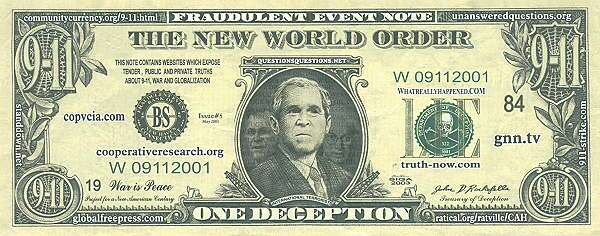
Kenn Thomas – Thomas, as editor of Steamshovel Press has been one of the leading lights in conspiracy research for years. With his friend, the late Jim Keith, he has been investigating “The Octopus”, a cabal that supposedly killed journalist Danny Casolaro when he got too close to them. This was a little too self-publicising for our tastes, with a bunch of plugs for Steamshovel publications and footage of Thomas appearing on TV. He talked about mysterious clusters of deaths, such as the one that plagued Marconi scientists in Britain a year ago. But the truth is, if you’re a conspiracist, no matter how you died, it’s suspicious. Just put the cause of death in quotes – “cancer”, a “heart attack”, in a “car crash”, “suicide” – and there you are, instant conspiracy! C-
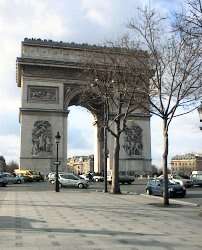
Michael Tsarion – Freud said, “Sometimes a cigar is just a cigar”, and Tsarion would do well to listen. It’s conceivable the media uses sacred symbols, for example in advertising; I’ve always wondered about Bacardi’s bat. But Tsarion takes the concept to ludicrous extremes, interpreting everything this way. For example, Kraft, as in Foods, refers to Masonic craft – not James L. Kraft, who started a Chicago wholesale cheese business in 1903? Glad we sat at the back, as our sniggers (Volvo = Vulva!) would’ve disrupted proceedings. Factually wrong – Spica is not the brightest star in the sky – he also claimed the Arc de Triomphe was a phallic symbol. Now, I don’t know what his penis looks like, but there are better candidates in Paris, not least at the other end of the Champs Elysees. I think we finally lost it when he claimed “Sears” was an anagram of “Aries”. Guess he can’t spell either. However, it is an anagram of “ARSES”. Now that’s symbolism… E+
After the second part of Hoagland’s workshop (see above), it was time for the Q&A. This is always entertaining, for the wide range of topics covered and views aired, both by the panellists and the audience – at one point, I thought a fight was going to break out over whether it was the limo-driver who shot JFK. Perhaps the most interesting question asked for predictions of what to expect: Monteith reckoned a major biological attack was possible, but Hoaglund and Tsarion (who came over much better as a panellist than as an individual speaker) predicted the assassination of George W. Bush. Hoaglund pointed out that both The West Wing and 24 have had storylines depicting the vice-president taking over…
We remain amazed at the breadth and depth of the program Brian Hall and his team put on, and with commendable efficiency, everything running to schedule. While not every speaker was convincing (to say the least!), it was nice to learn our bullshit detectors are still fully functioning. We left, refreshed in our belief that whatever appears to be going on in society, is not necessarily what actually is happening. That alone makes our attendance at Conspiracy Con 2004, a foregone conclusion.
More information
- The Conspiracy Con website – audio- and video-tapes of this year’s presentations
- Stan Monteith
- Arizona Wilder
- Jerry Smith
- Jordan Maxwell (under construction at time of writing)
- Jim Marrs
- Carol Brouillet & Ken Jenkins
- Kenn Thomas
- Michael Tsarion
- Our reports on Conspiracy Con 2001 and Conspiracy Con 2002.
